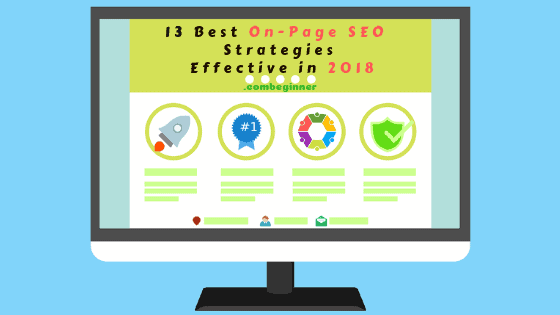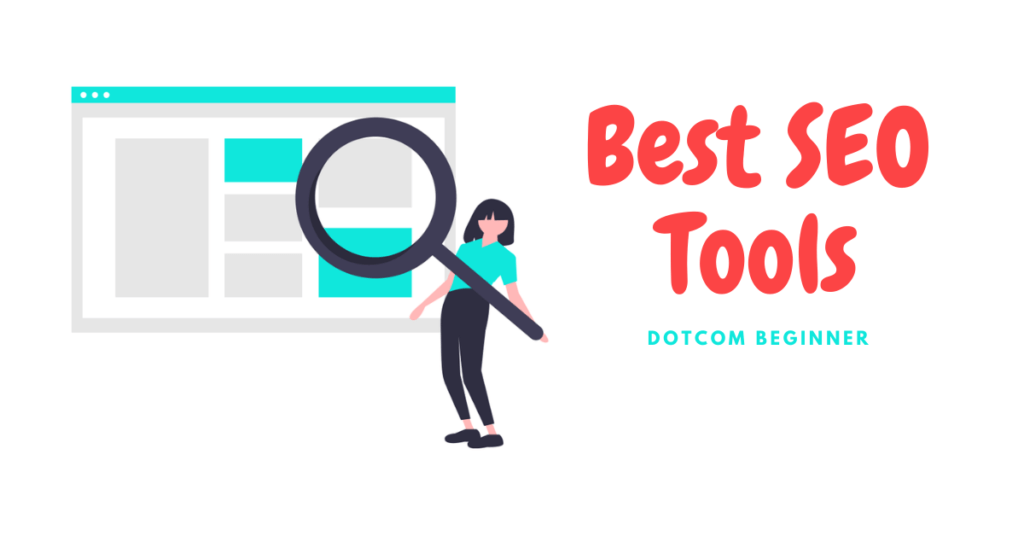Last Updated on January 16, 2023
E-commerce websites are online platforms that allow businesses to sell their products and services directly to customers over the internet. As we all know, e-commerce has become an essential part of any business strategy in the digital age. But just having an online store is not enough to ensure success; you also need to ensure that your website is easy to find and ranks well in search engine results pages (SERPs). This is where search engine optimization (SEO) comes in.
SEO is improving your website’s visibility and ranking in search engine results pages. For eCommerce websites, this is particularly important as most online shoppers use search engines to find products to buy. If your website doesn’t show up in the top search results, it won’t be easy to attract new customers and increase sales.
In this blog post, we will cover all the important aspects of SEO for eCommerce websites. From understanding the unique characteristics of e-commerce SEO to optimizing product pages, improving site structure and navigation, building backlinks, and tracking and analyzing results, eCommerce websites can improve their visibility in search results, increase traffic, and ultimately increase sales by following the tips and best practices outlined in this post.
Key Takeaways (TL;DR)
- SEO is essential for eCommerce websites as it helps improve visibility and ranking in search engine results pages (SERPs).
- E-commerce websites have their own set of unique challenges and opportunities when it comes to SEO, including a large number of product pages and a high turnover of products.
- Optimizing product pages is crucial for eCommerce websites by ensuring that product titles, descriptions, and URLs are optimized for search engines, providing high-quality images and videos, and by using structured data.
- Improving site structure and navigation can help improve both the user experience and the website’s visibility in search results by creating a logical hierarchy, clear and intuitive navigation, and using breadcrumb navigation.
- Building high-quality backlinks is an important part of SEO for eCommerce websites; creating shareable content, guest blogging, and reaching out to other websites and social media can help increase brand awareness and attract backlinks.
- Tracking and analyzing results is a crucial step in the process of SEO, by monitoring key metrics and setting clear and measurable goals can help improve the website’s visibility and return on investment.
- E-commerce SEO requires ongoing effort. It’s important to stay informed of the latest trends and updates and continuously improve the website’s visibility in search results.
🌟 Understanding Ecommerce SEO
E-commerce websites have their own set of unique challenges and opportunities when it comes to SEO. For example, e-commerce websites typically have a large number of product pages, each of which needs to be optimized for search engines. This can be a lot of work and take a lot of resources. Additionally, many e-commerce websites have many pages similar to each other, like category and tag pages, which can create duplicate content issues.
Another challenge that e-commerce websites face is that they often have a high product turnover, meaning that product pages are frequently updated or removed. This can make it difficult to keep the information in the search engine indexes accurate and up-to-date and redirect pages that are no longer available.
However, eCommerce websites also have unique opportunities to optimize their SEO. For example, eCommerce websites can create unique, in-depth, and detailed product descriptions, which can increase the likelihood of product pages ranking well in search results. Additionally, e-commerce websites can take advantage of structured data, which can enhance product visibility in search engine results pages.
E-commerce sites can also use customer reviews and ratings as a strong sign of credibility, which can also help them get more attention. Lastly, e-commerce websites have the ability to target multiple long-tail keywords by creating a large number of category and subcategory pages, which can help attract a wider audience.
🌟 Optimizing Product Pages
Optimizing product pages is a crucial part of SEO for e-commerce websites. These pages are often the most important on an e-commerce website, and if they’re not optimized correctly, it can have a negative impact on the entire site’s search engine visibility.
One of the best ways to optimize product pages is by making sure that the product titles, descriptions, and URLs are all optimized for search engines. Product titles should be written to describe the product accurately and include relevant keywords. Product descriptions should be detailed and informative and also include keywords where appropriate. URLs should be short, descriptive, and also include relevant keywords.
Another key aspect of optimizing product pages is including high-quality images and videos. These can provide a better user experience and give search engines more information about the product. Optimize images by compressing them and using descriptive, keyword-rich file names. Videos can be used to give more information about a product, and they can be optimized by using titles, descriptions, and relevant tags.
In addition, e-commerce websites can take advantage of structured data. This can be added to product pages in the form of schema markup, which helps search engines understand the content on the page and can lead to the display of rich snippets in the search results. Rich snippets, such as product ratings or pricing, can enhance the visibility of products in the search results and can also increase click-through rates.
🌟 Improving Site Structure and Navigation
Improving site structure and navigation is an important aspect of SEO for e-commerce websites. A well-organized and easy-to-use site structure can not only improve the user experience but also makes it easier for search engines to understand and crawl the site, which can improve the website’s visibility in search results.
When organizing products and categories, it’s important to create a logical hierarchy that is easy for both users and search engines to understand. This can be done by creating a clear and consistent organization of product categories and subcategories. Additionally, creating good filtering and sorting options can help users find the products they’re looking for quickly and easily while also making it easier for search engines to understand the organization of products on the site.
Improving the structure and SEO of a site also means making sure that the site’s navigation is clear and easy to use. The navigation menu should be easy to find and organized in a way that makes it easy for users to find the content they’re looking for. Additionally, having a search bar on the site can also help users find products easily.
Breadcrumb navigation is another aspect that can help in improving site structure and navigation. Breadcrumb navigation is a secondary navigation system that shows the user and the search engines the location of a page on the website and its relation to other pages on the website. This can help improve the user experience and make it easier for search engines to understand the relationship between different pages on the site, which can improve visibility in search results.
🌟 Building Backlinks
Backlinks are an important part of SEO for e-commerce websites, as they are one of the main ways that search engines determine the authority and credibility of a website. Backlinks are links from other websites to your website. They are also known as inbound links or incoming links. The more high-quality backlinks a website has, the more likely it is to rank well in search engine results pages (SERPs).
There are a number of ways to build backlinks for an e-commerce website. Some of the best ways to build high-quality backlinks include:
- Creating high-quality, shareable content: By producing valuable, informative, and shareable content, other websites will be more likely to link to it.
- Guest blogging and posting on other websites: By contributing to other websites in your industry, you can increase your visibility, attract new readers and gain backlinks
- Reaching out to other websites: Proactively reaching out to other websites in your niche and asking them to link to your site.
Social media can also be a good way to spread the word about your brand and get backlinks. By sharing your content on social media, you can drive traffic to your website and increase the chances that other websites will link to your content. You can also establish yourself as an expert in your field by taking part in online communities and forums, which can help you get backlinks.
It is important to note that the quality of the backlinks is more important than the quantity. Getting links from low-quality or spammy sites will harm your website’s SEO ranking; on the other hand, getting a few backlinks from high-quality and authoritative websites will significantly boost your SEO ranking.
🌟 Tracking and Analyzing Results
Tracking and analyzing results is a crucial step in the process of SEO for e-commerce websites. By monitoring these key metrics, you can determine the effectiveness of your SEO efforts and make data-driven decisions about how to improve your website’s visibility in search engine results pages (SERPs).
One of the most important tools that can be used for tracking SEO metrics is Google Analytics. This tool can provide valuable information about website traffic, such as the number of visitors, bounce rate, and the most commonly visited pages. Additionally, Google Search Console can provide information about the keywords that are driving traffic to the website, as well as any technical SEO issues that need to be addressed.
When analyzing the data, it’s important to look for patterns and trends. For example, if you see that a lot of people leave a certain page quickly, it could mean that the content on that page is not interesting or useful. Additionally, if you see that users are having trouble finding a particular piece of information on your site, it could be a sign that your navigation is confusing or not intuitive.
Another important aspect of tracking and analyzing results is to set clear and measurable goals. This will help you establish a benchmark and measure progress. Setting goals can also help you prioritize your efforts and focus on the activities that are most likely to drive results. Measuring the return on investment (ROI) of your SEO efforts is also important, as it helps figure out which SEO strategies are working well and bringing relevant results to the store and which of them aren’t that impactful.
✍🏽 Conclusion
In conclusion, SEO is essential to running a successful e-commerce website. E-commerce websites can improve their visibility in search results, increase traffic, and ultimately increase sales by understanding the unique characteristics of eCommerce SEO and implementing best practices for optimizing product pages, improving site structure and navigation, building backlinks, tracking, and analyzing results. SEO optimization can take time and require ongoing work, but the increased visibility, traffic, and sales that can come from it can make it well worth it. We want you to use the tips, and best practices discussed in this post and keep learning more about eCommerce SEO through online resources. Remember that SEO is an ever-evolving field, so it is important to stay informed of the latest trends and updates.





